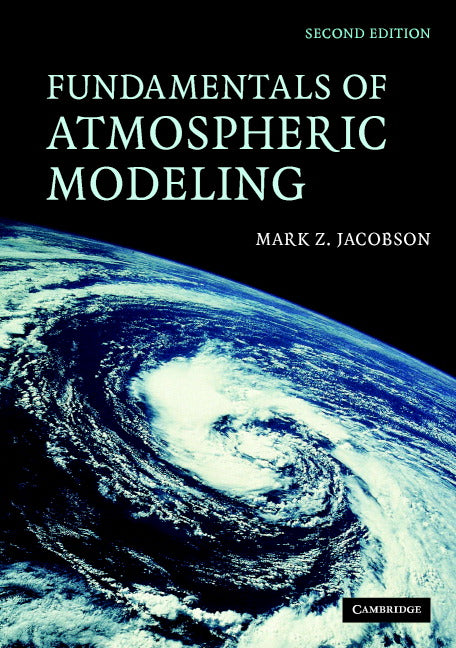Freshly Printed - allow 6 days lead
Couldn't load pickup availability
Fundamentals of Atmospheric Modeling
A revised edition of a successful and comprehensive textbook for students of air pollution and meteorology.
Mark Z. Jacobson (Author)
9780521548656, Cambridge University Press
Paperback, published 5 May 2005
828 pages, 175 b/w illus. 60 tables
25 x 16.7 x 4.4 cm, 1.28 kg
'Each topic is presented with detailed discussion, drawing on a wealth of referenced, up-to-date literature, as well as more applied, detailed mathematical treatment. … The text addresses a broad range of concepts relevant to modelling of atmospheric chemistry, aerosols, dynamics and radiation. While certainly not intended for the casual reader or general science audience, this book is more than worthy of a place on the 'well-thumbed' shelf of any graduate student or professional involved with atmospheric science.' Chemistry World
This well-received and comprehensive textbook on atmospheric processes and numerical methods has been thoroughly revised. This edition includes a wide range of new numerical techniques for solving problems in areas such as cloud microphysics, ocean-atmosphere exchange processes and atmospheric radiative properties. It also contains improved descriptions of atmospheric physics, dynamics, radiation, and aerosol and cloud processes. It is essential reading for researchers, scientists and advanced students to successfully study air pollution and meteorology.
Preface
Acknowledgements
1. Introduction
2. Atmospheric structure, composition and thermodynamics
3. The continuity and thermodynamic energy equations
4. The momentum equation in Cartesian and spherical coordinates
5. Vertical-coordinate conversions
6. Numerical solutions to partial differential equations
7. Finite-differencing the equations of atmospheric dynamics
8. Boundary-layer and surface processes
9. Radiative energy transfer
10. Gas-phase species, chemical reactions and reaction rates
11. Urban, free-tropospheric and stratospheric chemistry
12. Methods of solving chemical ordinary differential equations
13. Particle components, size distributions and size structures
14. Aerosol emission and nucleation
15. Coagulation
16. Condensation, evaporation, deposition and sublimation
17. Chemical equilibrium and dissolution processes
18. Cloud thermodynamics and dynamics
19. Irreversible aqueous chemistry
20. Sedimentation, dry deposition and air-sea exchange
21. Model design, application and testing
Appendix A. Conversions and constants
Appendix B. Tables
References
Index.
Subject Areas: Atmospheric physics [PHVJ]


